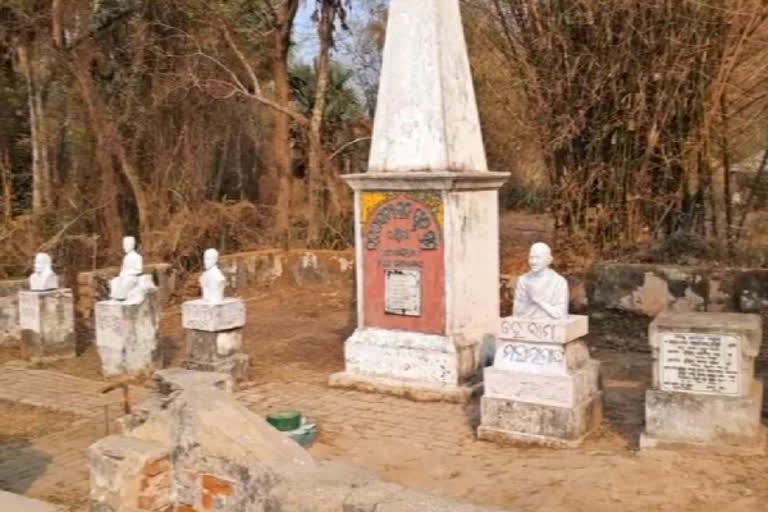Hyderabad: Even as most Indians vividly recall the salt satyagraha by Gandhiji and his followers as one of the pivotal turning points in scripting India's Independence, not many are aware of the significant part played by the people of Odisha, especially the ladies, in Salt Satyagraha. The centre of this 'satyagraha' in Odisha was Inchudi, a small village situated 19 km from Balasore town.
Inchudi is famous for the historic Salt 'Satyagraha' of 1930. It is said that here the success of mass civil disobedience against Salt Laws occupied second place in India after Dandi in Gujarat where Mahatma Gandhi himself led the movement. Gandhiji had visited Balasore district from 14th to 17th December 1927. The Salt 'Satyagraha' at Inchudi was headed by Surendra Nath Das.
The Inchudi campaign spearheaded by women soon spread to other places in the coastal belt of Orissa were regarded as one of the highlights of the movement. As soon as the 'Satyagraha' started at Inchudi, Rama Devi, accompanied by Malati Devi, Annapurna Devi and Kiran Bala Sen and other ladies reached the 'Satyagraha' Camp at Balasore.
Salt production and distribution was a very lucrative business for the British. They introduced a series of laws prohibiting Indians from producing and selling salt independently, affecting the whole populace that was by and large poor. The British had imposed stringent taxes on Indian salt to facilitate its import, which in turn greatly benefitted the British traders.
Mahatma Gandhi gave the historic call for the Civil Disobedience Movement in the Lahore session of the Indian National Congress. Following the call, satyagrahis from all over the country embarked on the journey to break the 'Salt Law' - the first phase of the Civil Disobedience Movement.
Odisha had been greatly affected by the Salt law as it was a major industry in the state, being the only subsidiary industry to agriculture due to Odisha's vast coastline. The Salt Satyagraha in Odisha was launched under the leadership of Harekrushna Mahatab, president of the Utkal Pradesh Congress Committee in 1930. The salt march in Odisha began from 'Inchudi' and went on to be known as the 'Second Dandi'. The Shanti Stupa and Smruti Peetha (memorial) remind us about the village’s role in the Salt Satyagraha.
Following Gandhi’s call, 21 volunteers led by Gopabandhu Chaudhary and Acharya Harihar Das led a salt march, on foot, from Swaraj Ashram in Cuttack to Inchudi on 6 April 1930. Following Gopabandhu Chaudhary's arrest on April 9, the group was by Acharya Harihar Das. The group reached Balasore on 12 April and on 13 April 1930 they broke the salt law at Inchudi. Several satyagrahis were arrested for breaking the salt law and many were injured by the British force. Thousand of earthen pots, required for salt processing, were also broken by the police force.
Also read: Recognising 'Paika Bidroha' as India's first war of Independence under govt consideration
The salt satyagraha of Inchudi in Balasore is aptly considered as the next biggest after Mahatma Gandhi’s Dandi Yatra and is often referred to as the 'second Dandi' or the 'Dandi of Odisha.'
The place where the Salt Law was broken bears testimony to the freedom struggle. Although a memorial has been constructed here, nothing tangible has been done to remember the freedom fighters and their great act. The memories of satyagrahis are perishing because of sea erosion and encroachment by prawn culturists. Though the place has been declared a tourist spot in 2003, the lack of proper promotion attracts only a few people to it.
Inchudi is a memorable place for all Indians, but this historical place is yet to get national recognition.



